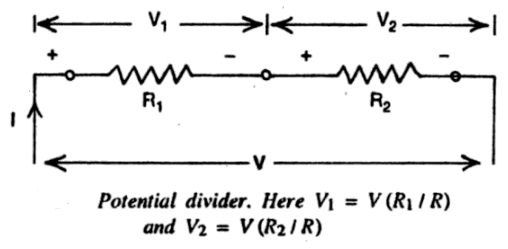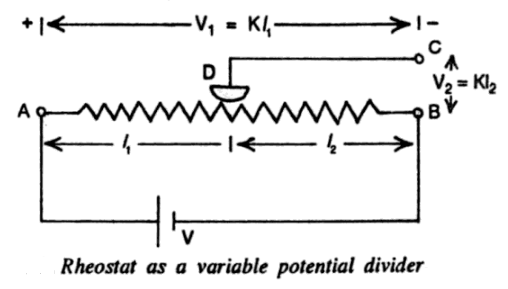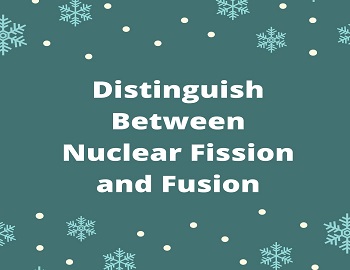Potential Divider:
For operating certain electronic circuits voltages less than the battery voltage are required. Sometimes different voltages are required to run an electronic device, although only one battery is available. For such a situation a series circuit is used as a device to divide a given voltage in the desired proportion.

Suppose there are two resistors R1 and R2 joined in series as shown above. If a voltage V is applied across the combination, then the current I through the series circuit is given by-
| I = V/R |
Where R1 = (R1 + R2). Hence the voltage V1 across R1 and the voltage V2 across R2 are given by-
| V1 = IR1 = V (R1/R) ……….(i) V2 = IR2 = V (R2/R) ……….(ii) |
Realtions (i) and (ii) are known as proportionate voltage relations. The voltage across R1 is R1/R times the applied voltage. For example, if R1 is one-third of the total series resistance, the voltage across R, is one-third of the applied voltage.
Dividing (i) and (ii), we get
| V1/V2 = R1/R2 ……….(iii) |
The above relation shows that the voltage in a series circuit gets divided across the resistors in direct proportion to their resistances. The below figure shows how a rheostat ABC can be used as a variable potential divider. For this, the fixed terminals A, B of the rheostat are joined to the battery, and output is taken across A, C, or across C, B.










Comments (No)